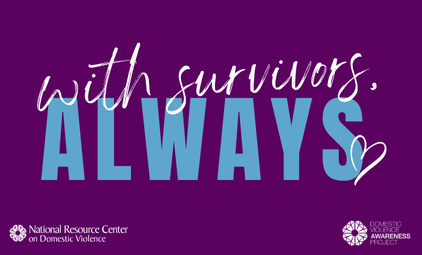by Elizabeth Flood for the National Resource Center on Domestic Violence
Nearly one in five young people in the United States runaway from homes before the time they reach the 18 years of age (Urban Institute, 2010). In fact, approximately 1.6 million youths are identified as runaway or homeless (Substance Abuse and Mental Health Services Administration, 2004).
The Runaway and Homeless Youth Act (RHYA) broadly defines homeless youth as individuals under the age of 18 lacking the opportunity to live in a safe environment with their family and who have no other safe alternative, long-term living arrangement; however, a majority of U.S. jurisdictions do not have specific definitions for the runaway and homeless youth population (National Network for Youth, 2012). The lack of classification and consistency in definitions and terminology between states presents challenges for interstate collaboration and the development of targeted interventions and services. The report, Alone Without a Home (National Law Center on Homeless and Poverty & National Network for Youth, September 2012), reviews the laws related to runaway and homeless youth in each U.S. State and territory.
Needs of Runaway and Homeless Youth

Runaway and homeless youth are often living in, or at the brink of a crisis. While their needs may be varied and multilayered, the situational conditions precipitating their runaway event should serve as the primary basis for approach to interventions. The development of creative and innovative solutions requires coordinated collaboration between community partners who are dedicated to making sure runaway and homeless youth do not slip through the cracks.
Responsive programs must be ready to address the myriad of individual and overlapping circumstances in the lives of runaway and homeless youth, which may include polyvictimization, substance abuse, physical disability, medical complications, mental health challenges, hunger, educational barriers, concerns around gender identity or sexual orientation, or other issues.
Program Models
Youth-serving organizations in your community may provide programs and services to runaway and homeless youth, including:
Street outreach: These efforts connect youth-serving agencies directly with runaway and homeless youth to make them aware of available resources and support.
Stable housing: These programs provide long-term viable solutions addressing the basic need for shelter. Rapid re-housing toolkits explore options for permanency and self-sufficiency. The National Alliance to End Homelessness provides additional information and resources related to the rapid re-housing strategy.
Transitional living: These programs allow for temporary domicile arrangements and often provide for therapeutic intervention and safety planning.
Youth centers: These programs attempt to reconnect runaway and homeless youth to families and/or other services. Centers, such as Safe Place and the Basic Center Program (BCP) provide a gateway to local community avenues of support and offer opportunities to access safe havens during moments of crisis.
Program Responsiveness
Runaway and homeless youth agencies and domestic violence victims’ services providers share a mutual goal: enhancing the safety and healing of young people living situations marked by violence and abuse (NRCDV, 2014).
There is a strong intersection between experiences of domestic and sexual violence and youth homelessness. Abuse at home is often the reason that youth run away, and may increase the risk of lifetime abuse, especially for those living on the street. Creating partnerships between domestic violence and youth-serving agencies is critical to developing meaningful services and effective intervention and prevention strategies for both homelessness and relationship abuse. Access resources and information to support your efforts in finding common ground, building partnerships, and enhancing services, and implementing sustainable practices in the Runaway and Homeless Youth and Relationship Violence Toolkit by the National Resource Center on Domestic Violence (NRCDV).
Communities lacking available youth-serving agencies may rise to meet the need by engaging community stakeholders in developing responses or protocols to help fill the gaps in services. Domestic violence and sexual assault programs can provide counseling, shelter, or other services to runaway and homeless youth who have experienced victimization or exposure to violence. Service providers can also meet the needs of runaway and homeless youth by educating the community through seminars and informational sessions in schools, healthcare settings, community gatherings, and faith-based and secular meetings. Effective responses require invested communities.
National Runaway Prevention Month
November is National Runaway Prevention Month (NRPM), offering an opportunity for your agency to raise awareness about this issue, the services you provide to this population, and your partnerships with youth-serving agencies.
To learn more, join the NRCDV and the National Runaway Safeline for a free national webinar on Monday, November 3rd: Promoting Youth Safety During National Runaway Prevention Month and Throughout the Year.
In what ways does your agency help to meet the needs of runaway and homeless youth?

















